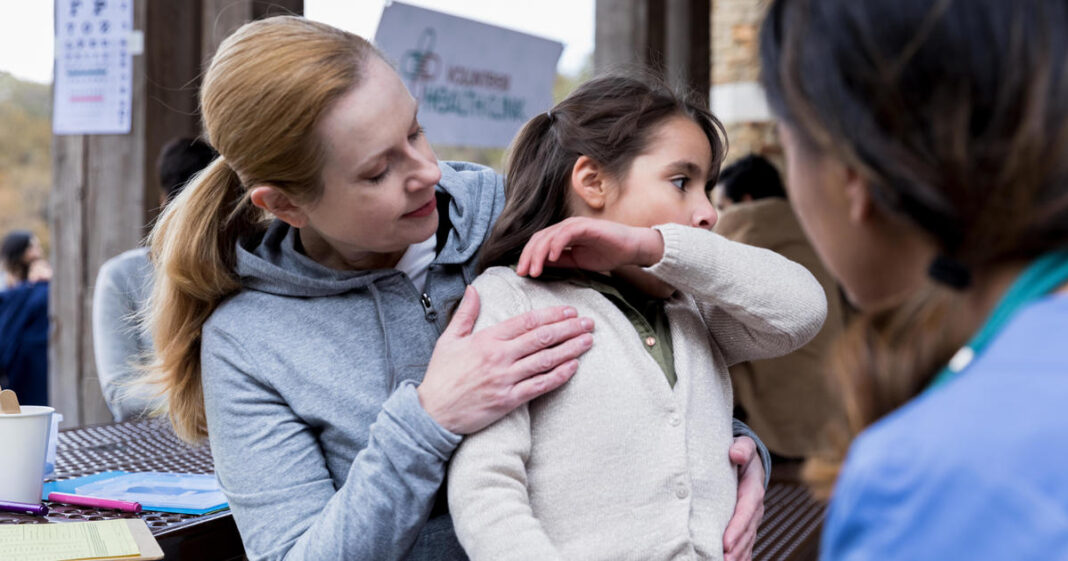At least 364 pertussis infections were reported to health officials last year statistics Published Thursday through the Centers for Disease Control and Prevention, marking the worst Thanksgiving for whooping cough in a long time.
This tops the previous Thanksgiving report, which recorded 228 cases of pertussis for the generation ending November 27, 2010. At that time, 27,550 cases were reported by the end of 2010, already down from 28,167 cases to date.
Thanksgiving typically sees a slowdown in reported cases during most outbreaks, resulting from delays in testing and reporting across the country in addition to changes in community visits to the physician.
Although this moment wave of whooping cough The surge continues in various states this generation, including Ohio, where 84 cases were reported. This is the most of any case, and exceeds the 67 pertussis cases reported by Ohio in a generation earlier.
An Ohio spokesperson said, “Pertussis can be cyclical. After seeing a low number of cases reported nationally over the past few years – during and after the COVID-19 pandemic, pertussis is now -Pandemic trends are returning. Ohio is no different.” Fitness section mentioned in an overview.
An Ohio spokesperson noted that progress to this point was “consistent with the past few years.” Covid-19 pandemic“And have not yet managed the full range of cases reported in 2013.
The total number of cases nationwide at the time is lower than some previous figures, with weekly reported cases reaching 577 before Thanksgiving – more than 10 times the same as last fall, and the worst in at least a decade.
Fitness officials have cited one variety of factors Current cases of whooping cough, including those due to a lag or prior weakness in immunity from vaccination and the move to safer but less effective vaccines in the 1990s.
“We have to acknowledge that our vaccination rates in Montgomery County for school-age children are low. They have decreased since the pandemic, and they are lower than the state of Ohio, and lower than the United States.” ” noted Dr. Becky Thomas, scientific director of the fitness segment for Bernard Law Montgomery County, Ohio.
Within Ohio, Bernard Law Montgomery County makes up the largest percentage of reported cases in recent months, even though it is not the network with the most cases.
Thomas said about 63% of their cases were in school-age children and 12% were in daycare. This section often tells of outbreaks from college nurses, warning of large numbers of young people becoming ill with whooping cough.
Thomas mentioned the doctors have The peak number of ophthalmic pertussis cases observed for several months is better than what has been seen in recent times.
“There was an increase in cases last time, but it’s nothing compared to this fall,” Thomas said. “And when we first started to see a really notable increase, that was around the time kids went back to school.” That is, around the middle of August.”
Thomas said most of the cases reported in the county said they were vaccinated against pertussis, though it’s unclear if everyone was, looking at the photos. One-third of cases were in teenagers, who are recommended Receiving a booster dose until year 12.
“We have specific data on vaccination records for seventh grade entry that shows that vaccination rates for tetanus, pertussis vaccine have gone down,” Thomas noted.
The wave of whooping cough comes at a time when fitness sectors are preparing for a comeback. expected wave From COVID-19 and flu infections this winter season.
“Whooping cough is not the only respiratory illness we are concerned about. So we’re encouraging people to stay home when they’re sick, practice good hand hygiene, see their health care provider if they need If symptoms are worsening or severe, and definitely get vaccinated,” said County Fitness Division Commissioner Jennifer Wentzel.
